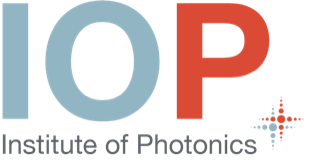ERC Starting Grant - QFreC



Overview
Machine learning empowers computers to solve complex tasks such as pattern identification and strategy optimization with applications in, e.g. financial trading, fraud detection, medical diagnosis, and self-driving vehicles. The required computing power is, however, pushing existing computational resources to their limits, restraining their further advancement. In QFreC, I target the realization of photonic frequency-based quantum co-processors, specifically tailor-made to solve machine learning problems with capabilities commensurate with today’s high-power, yet energy-efficient processing needs. In particular, I will use a high-dimensional photonic quantum frequency comb approach, where photons have hundreds to thousands of discrete and equidistantly spaced frequency modes, giving access to large, scalable information capacity.
For implementing quantum-accelerated machine learning tasks such as the classification of classical or quantum data, I will follow i) the exploration of quantum photonic frequency-domain processing with the adaptation of qubit learning concepts (vector-based and neural network-based approaches) to high-dimensional quantum representations, i.e. quDits, ii) the realization of efficiency-enhanced and novel integrated quantum frequency comb systems with quantum resources that allow real-world applications using highly nonlinear on-chip platforms, and iii) the development of reconfigurable, fast, and broadband experimental control schemes using, e.g. quadrature amplitude modulation formats and nonlinear optical processes. To enable stable, compact, cost- and energy-efficient quantum processing devices, the QFreC project will build on the advances of the well-developed telecommunications infrastructure and the photonic chip fabrication industry.
QFreC merges photonic quantum frequency-domain circuits with quantum machine learning, enabling large-scale controllable quantum resources for the exploration of quantum-enhanced machine learning.
Overview
Machine learning empowers computers to solve complex tasks such as pattern identification and strategy optimization with applications in, e.g. financial trading, fraud detection, medical diagnosis, and self-driving vehicles. The required computing power is, however, pushing existing computational resources to their limits, restraining their further advancement. In QFreC, I target the realization of photonic frequency-based quantum co-processors, specifically tailor-made to solve machine learning problems with capabilities commensurate with today’s high-power, yet energy-efficient processing needs. In particular, I will use a high-dimensional photonic quantum frequency comb approach, where photons have hundreds to thousands of discrete and equidistantly spaced frequency modes, giving access to large, scalable information capacity.
For implementing quantum-accelerated machine learning tasks such as the classification of classical or quantum data, I will follow i) the exploration of quantum photonic frequency-domain processing with the adaptation of qubit learning concepts (vector-based and neural network-based approaches) to high-dimensional quantum representations, i.e. quDits, ii) the realization of efficiency-enhanced and novel integrated quantum frequency comb systems with quantum resources that allow real-world applications using highly nonlinear on-chip platforms, and iii) the development of reconfigurable, fast, and broadband experimental control schemes using, e.g. quadrature amplitude modulation formats and nonlinear optical processes. To enable stable, compact, cost- and energy-efficient quantum processing devices, the QFreC project will build on the advances of the well-developed telecommunications infrastructure and the photonic chip fabrication industry.
QFreC merges photonic quantum frequency-domain circuits with quantum machine learning, enabling large-scale controllable quantum resources for the exploration of quantum-enhanced machine learning.
Publications and research output
- A. Khodadad Kashi, L. Caspani, and M. Kues, “Spectral Hong-Ou-Mandel Effect between a Heralded Single-Photon State and a Thermal Field: Multiphoton Contamination and the Nonclassicality Threshold,” Phys. Rev. Lett. 131, 233601 (2023) doi.org/10.1103/PhysRevLett.131.233601
- A. M. Angulo, J. Heine, J. S. D. Gomez, H. Mahmudlu, R. Haldar, C. Klitis, M. Sorel, M. Kues, „Shaping the spectral correlation of bi-photon quantum frequency combs by multi-frequency excitation of an SOI integrated nonlinear resonator,” Optics Letters 48, 5583 (2023). doi.org/10.1364/OL.503909
- L. Sader, S. Bose, A. Khodadad Kashi, Y. Boussafa, R. Haldar, R. Dauliat, P. Roy, M. Fabert, A. Tonello, V. Couderc, M. Kues, B. Wetzel, “Single-Photon Level Dispersive Fourier Transform: Ultrasensitive Characterization of Noise-Driven Nonlinear Dynamics,” ACS Photonics 10, 3915-3928 (2023). doi.org/10.1021/acsphotonics.3c00711
- H. Mahmudlu, R. Johanning, A. Khodadad Kashi, A. van Rees, J. P. Epping, R. Haldar, K.-J. Boller, M. Kues “Fully on-chip photonic turnkey quantum source for entangled qubit/qudit state generation”, Nature Photonics 17, 518 (2023). doi.org/10.1038/s41566-023-01193-1
- T. Godin, L. Sader, A. Khodadad Kashi, P. Hanzard, A. Hideur, D. J Moss, R. Morandotti, G. Genty, J. M. Dudley, A. Pasquazi, M. Kues, B. Wetzel, “Recent advances on time-stretch dispersive Fourier transform and its applications,” Advances in Physics: X 7, 2067487 (2022).
- A. Khodadad Kashi, L. Sader, R. Haldar, B. Wetzel, M. Kues, “Frequency-to-time mapping technique for direct spectral characterization of biphoton states from pulsed spontaneous parametric processes,” Frontiers in Photonics 3, 834065 (2022).


